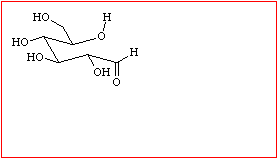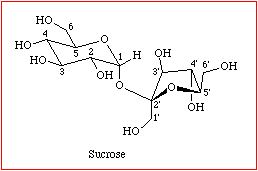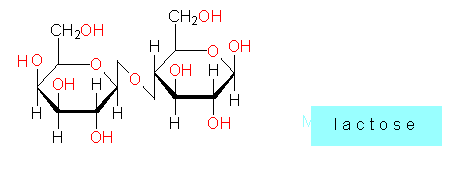|
|
|
|
|
|

Formation of a Disaccharide: The figure llustrates the combination of alpha D-glucose and a D-fructose unit to form the disaccharide sucrose

Highlights some of the important structural features of polysaccharides in general and of sucrose in particular.
Monosaccharide subunits condense (react under the splitting off of water) to form disaccharides with glycosidic bonds. Here, it is distinguished between the alpha- and the beta- glycosidic bond. Some important examples are:

consists of a alpha-glycosidically linked glucosyl-residue and a fructosyl-residue. Then the


with an alpha-glycosidic bond between two glucosyl-residues and the

where two glucosyl-residues are linked in a beta-glycosidic way.
In all these cases, one residue is linked with its
C1-atom to the C4-atom of the other sugar
residue (a 1 > 4 glycosidic bond).
We will later on also meet 1 > 2, 1 > 3 and 1 > 6 glycosidic bonds.
|
|
|
|